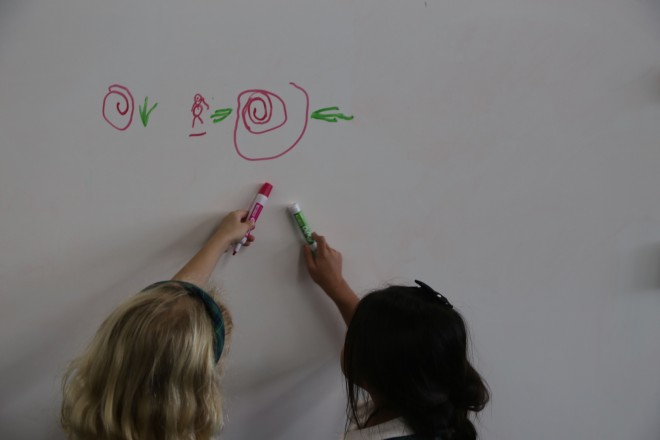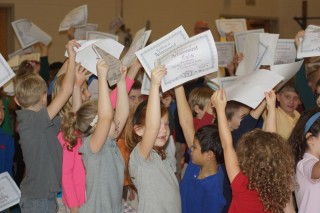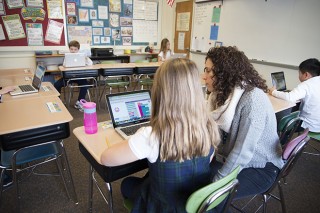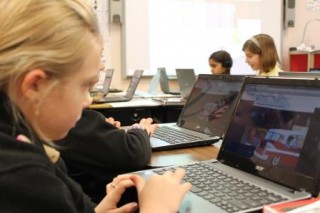A week-long Hour of Code in December got Burke’s students thinking about the elements of computer programming — but in many cases, without a screen in sight, or through a blend of the plugged and unplugged.
Those activities included:
• Kindergartners creating symbols for dance steps, stringing them together in a line of code on a white board and “running the program” to check for errors.
• Games of logic such as Out of the Gridlock, Chocolate Fix and Robot Turtles, which were played both in class and during “Open Code” sessions before school and at recess.
• Assembling code using the pinball-like Rami game, which uses a system of levers marked with 0s and 1s to direct plastic balls to specific locations.
• A collaboration between 4th and 8th graders where students chose a favorite poem in the Library and then animated it using a program called Scratch.
Burke’s students also explored coding through apps such as Beebots and a wired “invention kit” called Makey Makey. More than 50 different activities over the course of the week kept students engaged, and parents were provided with an extensive guide to keep the coding going at home.
“We’re not teaching code because we expect every student to become a programmer,” says Mike Matthews, Burke’s Director of Curriculum & Program Innovation, who spearheaded the efforts. “Rather, we’re teaching code because we believe that in doing so we’re teaching transferrable skills like logic and problem-solving that will benefit our girls in whatever career path they end up pursuing.”
It was thrilling to see the excitement in our students as they reasoned their way through the activities listed above and so much more — and came to realize that coding and programming are tangible and at their fingertips. Currently, Burke’s administrators are evaluating the success of the week of Hour of Code activities, with an eye toward implementing more coding-related activities into the curriculum on a permanent basis.



